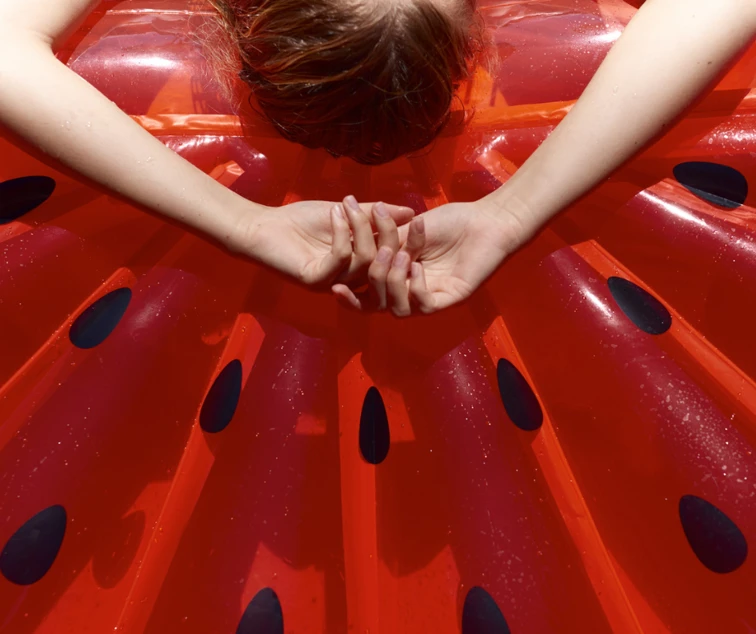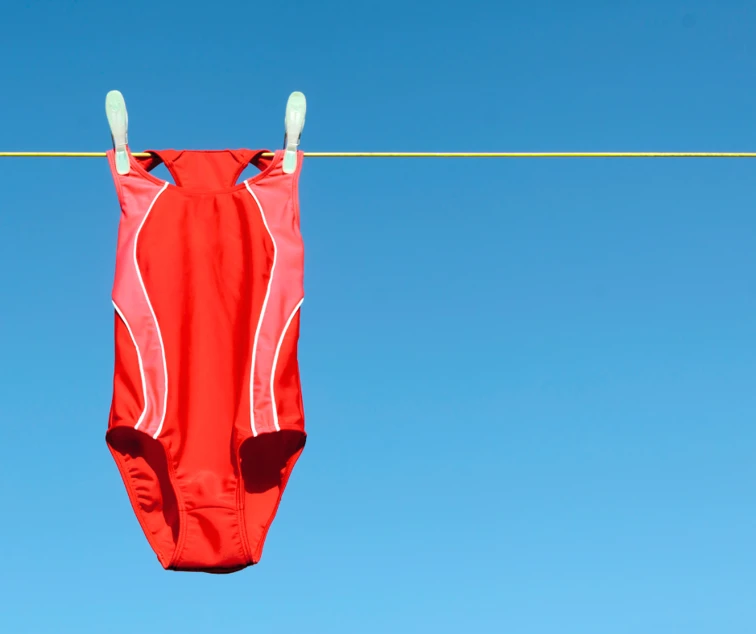Can you go swimming on your period?

POV: Your period has arrived on the day you really didn’t want it to. Whether you’re on a spa day with your friends, training in the pool or have a fun day planned at the beach, realising you’ve got your period can be disappointing. For some, it might even be enough to cancel plans altogether, particularly if you experience other period-related symptoms like cramps, bloating or mood swings that could have an impact on your day.
If you’re worried about leaking onto your swimwear, controlling the flow in the water or frequently changing your sanitary products, read on. Below, you can find our top tips for going swimming on your period without letting it impact your experience.
Can I swim on my period?
You absolutely can go swimming on your period, so don’t let fear hold you back. In fact, a study has shown that swimming while on your period is actually a good thing, and can reduce some premenstrual syndrome (PMS) symptoms like mood changes, headaches, tiredness, breast tenderness and cramps. The study split 70 women who had been diagnosed with PMS into two separate groups: one that engaged in swimming and a control group. It concluded that there was a beneficial effect on the physical and psychological symptoms of PMS.
Some people might think they can’t swim on their period due to the risk of leaking (or the myth that they’ll attract sharks when swimming in the sea!). But actually, when you’re wearing the right menstrual products, you can take a dip in the pool any time you like.
Below, you can find some information about suitable products to wear in the water while you’re on your period, from tampons and pads to period pants and menstrual cups.
Swimming with a tampon
Tampons can be a great product choice to wear while swimming, because they capture the blood before it has a chance to leave your body. This can reduce potential leakage into the pool while also being discreet (unlike pads, which may be visible and absorb a lot of water).
Although tampons may absorb a tiny bit of water through the string, this won’t have much of an impact on their effectiveness, so you should be able to wear one as normal and change it once you’ve come out of the water.

How to swim on your period without a tampon
If you’re not comfortable using a tampon, or haven’t really used one before, there are alternative period products available, and below we explore the pros and cons to some of these.
Can you wear pads when swimming?
Generally, period pads (whether reusable or disposable) aren’t going to be the best option for swimming in. As they’re not placed inside your body, they will absorb much more water than a tampon or menstrual cup, making them less effective at absorbing any blood that you lose while in the water.
The glue that is present in disposable pads may deteriorate too, causing the pad to move around and become uncomfortable. It may even be visible around the bikini line, which could make you feel self-conscious.
If pads are generally your preferred period product, you can wear them before and after you go in the water and simply switch to another product while you take a quick dip.

Can you use period pants when swimming?
There are swimming period pants available that are specially designed to catch any period blood while you’re in the water, but are they truly effective or will you run into the same problems as period pads?
Some brands offer a suit that can hold up to two tampons worth of blood, with a water repellent layer that stops pool or sea water from getting in and reducing the absorbency of the suit. It is always worth checking consumer reviews before choosing your period swimwear to hear how other people have found the experience.
Some brands offer period pants or swimwear that are suitable for a heavier flow; however, if you suffer with particularly heavy periods, you may prefer to ‘double up’ using a tampon/cup and period underwear for extra protection.
Can you swim with a menstrual cup?
A menstrual cup could be a great period product to use when you’re swimming on your period.
No one would know it’s there (in fact, you can hardly feel it yourself when inserted properly) and there is no string that could be accidentally visible or absorb a small amount of water. Then there’s the added benefit that these products create a seal so leaks are almost non-existent, and you can feel more confident that you won’t bleed into the pool or onto your swimwear (wear that white bikini!).
The only thing to consider is that they will need emptying and rinsing, so during a day on the beach where there’s a lack of toilets available, this could be tricky. However, if you have quite a light flow, you may be able to wear the cup all day (eight to 12 hours) , depending on the manufacturer and their guidelines.
Sources
https://link.springer.com/article/10.1007/s00404-018-4664-1
https://www.pennmedicine.org/updates/blogs/womens-health/2016/june/swimming-and-your-period-5-myths-debunked
https://tampax.co.uk/en-gb/period-health/can-you-swim-on-your-period/
https://www.bodyform.co.uk/break-taboos/discover/living-with-periods/swimming-during-period/
https://wearedame.co/blogs/the-pioneer/can-you-wear-period-pants-swimming
https://www.morelandobgyn.com/blog/can-you-swim-with-your-period
https://www.leicspart.nhs.uk/autism-space/health-and-lifestyle/menstruation-periods-for-autistic-people/






